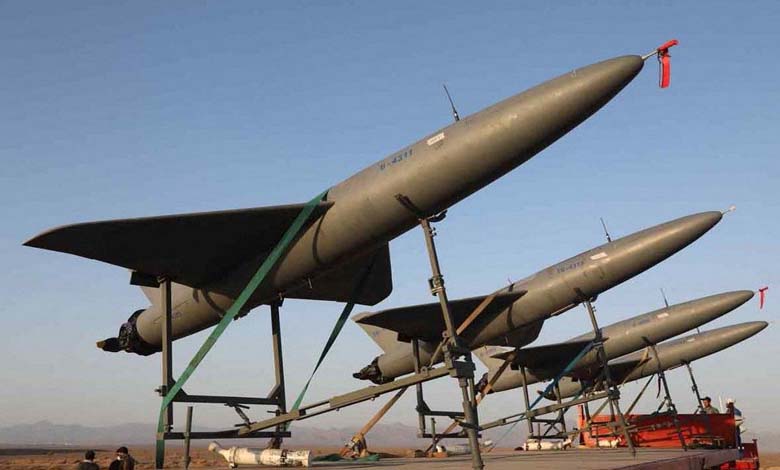Flying Terror Alarms the African Sahel: Cheap Drones Threaten National Armies

An invisible killer descends unexpectedly from the sky, bringing destruction and bloodshed, shaking confidence in institutions, and terrorizing both soldiers and civilians.
-
Gold and Drones: Alternative Funding and New Maps of Terrorist Threats in the African Sahel
-
Rising Terrorist Activities in the African Sahel… “Global Report”
This is the new reality posed by drones now in the hands of terrorist groups in the already volatile Sahel region of Africa, where they represent a growing threat to both regional security and civilian populations.
The French newspaper Le Monde reported on Thursday an unprecedented rise in drone use by armed groups in the Sahel, exposing the inability of national armies to effectively counter this evolving threat.
According to the report, “in the depths of the Sahara Desert, as military frontlines grow more fragile, small but effective drones are now flying over army bases—not only for reconnaissance but to deliver death from above.”
-
Mauritania fears the deterioration of Sahel Countries’ ties and the strengthening of terrorists’ grip
-
A Criminal Court in Africa’s Sahel: Necessity or Rebellion?
Escalating Attacks
Drone attacks carried out by terrorist groups have seen a sharp escalation. The Sahel branch of Al-Qaeda, particularly active in Mali and Burkina Faso, is now reportedly capable of arming low-cost drones with explosives, inflicting heavy losses on national forces using this rapidly advancing technology.
A study by the Policy Center for the New South, a Moroccan think tank, confirms that drone warfare in the Sahel has reached an unprecedented level of intensity.
The report highlights the increase in drone strikes carried out by armed groups, particularly the Group for the Support of Islam and Muslims (GSIM). Since September 2023, more than 30 confirmed drone attacks have been recorded—82% of which occurred between March and June 2025.
-
A U.S. Bill Will Soon Designate the Polisario as a Terrorist Organization
-
Breach of Fortified Cities and Strategic Attacks: Terrorism Unsettles the African Sahel
One of the most significant attacks occurred on June 1 at the Malian military base in Boulikessi, where the GSIM used drones to drop explosives, claiming the deaths of over 100 Malian soldiers.
Previously limited to surveillance and intelligence gathering, drones are now being converted into offensive platforms capable of executing direct strikes, the report explains.
According to the same source, the first armed drone attack took place in September 2023, when the GSIM dropped two improvised explosive devices on positions held by Dan Na Ambassagou militias in Bandiagara, central Mali.
-
Arming Dynamics of Extremist Groups in the African Sahel: What Is the Source of Their Arsenal?
-
Mauritania Warns: The “African Sahel” Region among the World’s Most Severe Crisis Hotspots
A Tactical Evolution
The Sahel region, stretching from Mauritania in the west to Sudan in the east, has faced worsening insecurity for over a decade, largely due to the spread of cross-border jihadist groups such as Al-Qaeda in the Islamic Maghreb and the Islamic State in the Greater Sahara.
Countries like Mali, Burkina Faso, and Niger have become battlegrounds for hit-and-run tactics used by these insurgents against local forces, civilians, and even UN peacekeeping missions.
The use of drones marks a major tactical evolution for these groups, signaling new logistical and technical capabilities, possibly acquired with external support or direct training from experts in other conflict zones like Yemen or Syria.
-
Rise in Al-Qaeda activities in the African Sahel… What factors led to this?
-
The Growing Jihadist Violence in the Sahel
These drones, easily purchased from commercial markets at low cost, are modified into deadly weapons. Equipped with makeshift explosive charges, they are deployed with surprising accuracy against military gatherings, heavy equipment, or strategic infrastructure.
Recent attacks have resulted in hundreds of military casualties, destruction of key military bases, and forced army units to withdraw from large portions of northern and central Mali. Even more concerning is the erosion of public trust in national armies, especially in rural communities.
Civilians, too, have become frequent targets—particularly during gatherings at markets or local celebrations—under suspicion of cooperating with state authorities.












